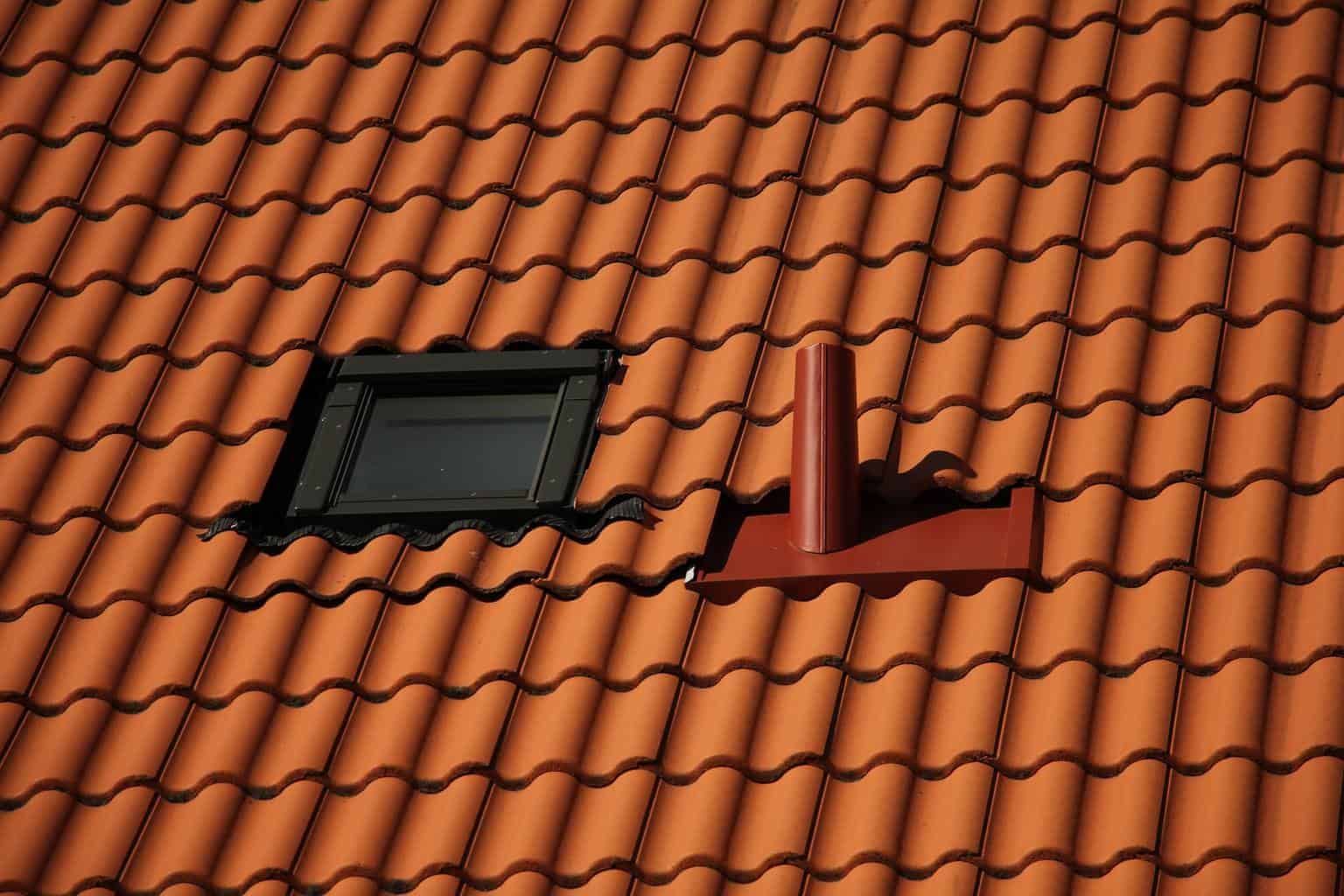Do you need to repair or replace your roof but don’t have enough cash on hand? There are several roof financing options to choose from, including personal and home equity loans, government-backed loans, credit cards, and in-house financing with a roofing company.
In this guide, you’ll learn how each method works and a viable alternative to financing a new roof.
Can You Finance a Roof Project?
Is it possible to finance a roof project? You can raise funds from various sources if you don’t have enough cash in your savings account. Home equity can be a great option since you will typically get a lower interest rate.
Personal loans can also give you the funds you need to pay for a roof upgrade. While credit cards can technically make it work, these cards have high interest rates and come with cash advance fees.
The Benefits of Financing Your Roof Improvement or Replacement
It may be tempting to pay cash for your roof improvement or replacement if you can. But is it a smart financial move? You can possibly save a bundle in interest. Still, financing may be the better option if you prefer to capitalize on these benefits:
Keep Your Savings Intact
The cost to repair a roof improvement or replacement can place a big dent in your emergency fund. However, financing the project allows you to keep your savings intact as you won’t have to pay the total bill upfront. Instead, you’ll make payments over time until the balance is paid off.
Affordable Monthly Payments
Depending on the financing option you select, you could get low monthly payments that easily fit into your budget. By breaking down the costs into small chunks, you can have peace of mind knowing you can comfortably afford the cost of your roof improvement or replacement.
Roof Financing Options
Here’s a breakdown of options available to finance your roof improvement or replacement, along with the key benefits and drawbacks of each.
1. Get a Personal Loan
A personal loan marketed as a home improvement loan allows you to pay for roof repair or replacement costs without putting your home up for collateral. The application process is generally straightforward, and it doesn’t take long to receive a decision.
However, these products often come with a high interest rate and a short repayment period. Consequently, the monthly loan payments could be steep if you borrow a hefty amount.
Pros:
- You do not need collateral for a personal loan
- It’s possible to get a personal loan even if you have bad credit
- The application process only takes a few days
- Personal loans are readily available and are given out by financial institutions, credit unions, and online lenders
Cons:
- You can end up with a higher interest rate since the debt is unsecured
- You will have an additional monthly payment
- Personal loans temporarily hurt your credit score since most lenders run hard credit checks
You typically need a good credit score to get a personal loan. Many financial institutions, credit unions, and online lenders offer these loans. You can submit applications to multiple lenders to receive the most competitive rates and terms.
2. Put it on Credit Cards
Credit cards could be a viable option if you qualify for a card with a 0 percent promotional APR offer. The trick is to pay the card off before the interest-free window ends – usually between 12 to 18 months.
Otherwise, you’ll be stuck paying a steep interest rate on the repair or replacement costs. And suppose you only make the minimum monthly payment. In that case, you will likely spend several hundred or thousand more to finance the roof.
Pros:
- Money is readily accessible
- You can get rewards for using your credit card for purchases
- Some credit cards already have high credit limits
Cons:
- High APR and cash advance fees
- Interest rates are variable and compound faster than other loans
- You can end up maxing out your credit card and having less credit left for other expenses
You can start using the credit card that you have, but if you want to open a new credit card, you will typically need a good credit score. While you can get a secured credit card if you have bad credit, that’s not the card you want to use to fund a roof replacement.
Many financial institutions offer credit cards and allow people to apply within seconds. You can receive a decision within a minute and proceed to claim your credit card. Some cards are virtual, which means you can use them right away instead of waiting for them to arrive in the mail.
3. Get Financing from a Roofing Company
Some roofing companies offer in-house financing to alleviate the stress of paying for repairs or a replacement at once. The interest rate and payment terms vary by lender, so inquire about this option and read the contract carefully before moving forward.
Pros:
- Receive quick financing
- Easier approval
- Interest-free options are available
Cons:
- Higher interest rates and fees if the roofing company does not offer interest-free options
- Potential home lien
Roofing companies are flexible with their credit score requirements. They have fewer barriers to entry. You can ask the roofing company you are working with if they have any program available for people who need to borrow money.
4. Get a HUD Home Improvement or Repair Loan
There are a few government-backed home renovation mortgage products to choose from:
- Fannie Mae HomeStyle Loan: You can use this loan to purchase and renovate your primary residence, secondary residence, or investment property. It allows you to borrow up to 75 percent of the home’s after-renovation value on top of the purchase price.
- FHA 203k Rehab Mortgage: These loans let you roll up to $35,000 into your mortgage to make repairs, improvements, or upgrades to your home. You must get approval from an FHA appraiser (and possibly a HUD consultant) before completing improvements. Also, you are required to use a licensed contractor, complete extensive paperwork, and meet a series of FHA 203(k) specific requirements.
- FHA Title I Property Improvement Loan: You can use this loan in conjunction with a 203(k) loan without refinancing your existing mortgage. Loans are limited to $25,000 and $60,000 for single and multi-family homes, respectively.
While these options may seem ideal, it’s important to consider the implications they have for your existing mortgage. Although you may qualify with a lower credit score, you’ll likely have to refinance, which could result in a higher interest rate and more costly monthly mortgage payments. Plus, the financing process tends to be more cumbersome and lengthy.
Pros:
- Available for people with bad credit
- Receive the capital you need to finance your roof
- Competitive rates and terms
Cons:
- An additional monthly payment
- It can take a few days to get approved
- Closing costs
Many lenders offer these financial products. You can research banks, credit unions, and online lenders that offer these products. A good FICO score will give you more options and better rates, but some lenders are more flexible for people with bad credit. Fannie Mae mortgages require a 620 FICO score or higher, while you can get an FHA loan with a score as low as 500.
5. Get a Home Equity Loan or HELOC
A home equity loan or home equity line of credit (HELOC) lets you tap into your home’s equity to get the funds you need to cover roof repair or replacement costs. Depending on your income and credit rating, you can possibly borrow up to 90 percent of your home’s value minus your outstanding mortgage balance.
Unfortunately, this option isn’t feasible if you haven’t been in your home for an extended period or if market conditions have changed and hurt your property value.
Pros:
- Tap into the home equity you have built up
- You may get a high loan amount if you have a lot of equity and good credit
- Lower interest rates than other options
Cons:
- You must have a good credit score
- Closing costs
- You have a second mortgage, which increases your monthly payments
You need enough equity in your home to qualify for these financial products. Most lenders use the LTV ratio to limit how much you can borrow. Your current mortgage and your HELOC or home equity loan typically cannot exceed an 80% LTV ratio. Some lenders offer more flexibility with LTV ratios as high as 95%. If you have a $1 million property and an $800,000 mortgage balance, you have an 80% LTV ratio.
6. Government-backed Loans
The Federal Government offers several loans you can use to buy or improve your home. You can use the lump sum from an FHA, USDA, or VA loan to cover a roofing project. The government has several home loan options available and can even introduce you to some grants. Grants are the best option if you qualify for them.
Pros:
- Competitive rates and terms
- The possibility of qualifying for grants
- Available for consumers who do not have good credit
Cons:
- Private mortgage insurance doesn’t go away after you have 20% equity in your property
- You have to qualify for a government-backed loan
- You will end up with a second mortgage
Government-backed loans offer generous credit score requirements, with some of them starting as low as 500. However, a higher credit score will grant you a more competitive interest rate. You can apply for a government-backed loan through a lender. Some online lending marketplaces put your application in front of dozens of lenders who can present loan offers.
7. Cash-out Refinancing
A cash-out refinance allows you to change your current mortgage. It’s a good option if you don’t have the best rate and term for your present mortgage. You will end up with a new rate and terms, along with a higher mortgage balance.
Homeowners can access the difference between their old mortgage and new mortgage as cash. For instance, if you refinance from a $500,000 mortgage to a $550,000 mortgage, you get the $50,000 difference as cash. It’s also possible to extend the duration of your loan to minimize the monthly payments.
Converting your loan from a 10-year term to a 15-year term spreads the monthly payments across more intervals. Adding more years to the backend of your home loan can compensate for a higher mortgage balance.
Pros:
- Get a new rate and term for your mortgage
- Reduce your monthly payments
- Tap into your home equity
Cons:
- You will replace your mortgage, which can hurt if you have a lower interest rate
- Closing costs
- You stay in debt longer
You will need a FICO score of 620 or higher to get a conventional refinance. Lenders will also review your LTV and DTI ratios. Your LTV ratio should be below 80%, but some lenders have higher limits. The debt-to-income ratio limit typically ranges from 43% to 50%. A lower DTI ratio is better. You can reduce this number by increasing your income or paying off more of your debt.
How to Determine Which Financing Option Is Right for You
It is a good idea to assess your financial situation, your credit, and how soon you need the cash before choosing a financing option. You can get the lowest rates with a home equity loan or a HELOC, but these financial products take more time to obtain than personal loans. You can also use your credit card or savings account right away without any delay. However, a credit card is very expensive if you use it for a cash advance.
Roof loans can assist with getting the capital you need for a roof replacement. Comparing various options and reaching out to multiple lenders can result in better rates and terms.







